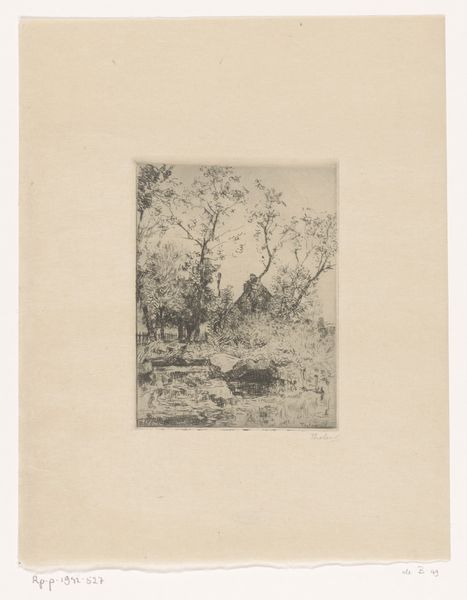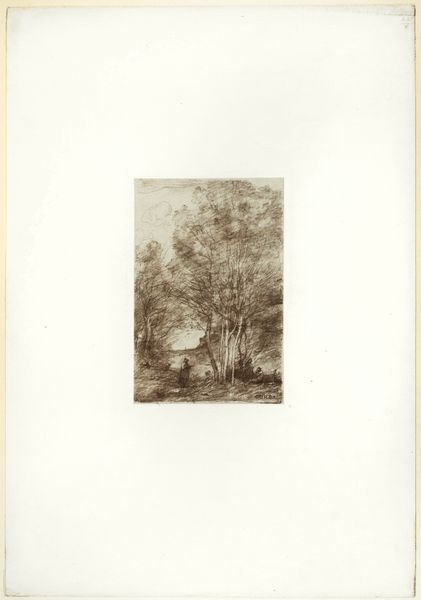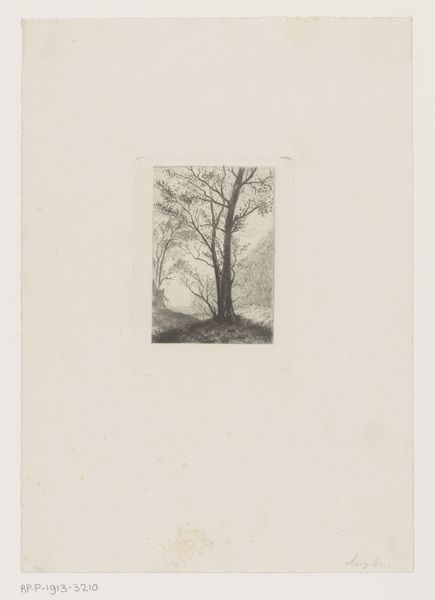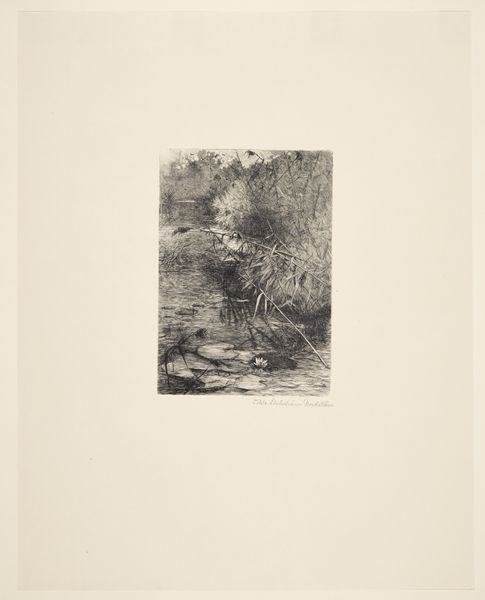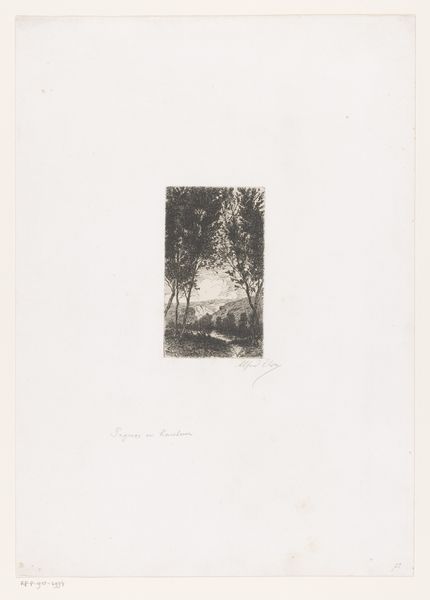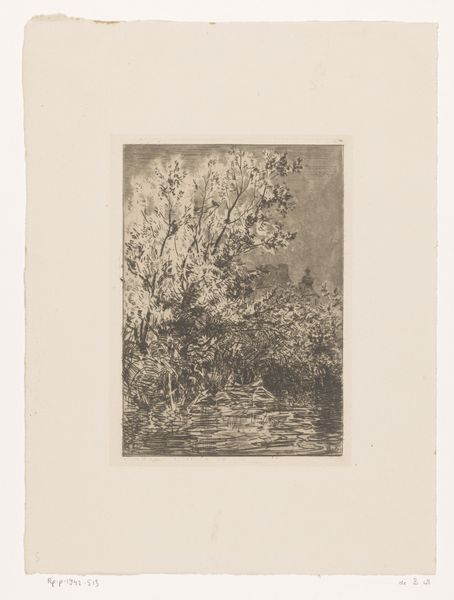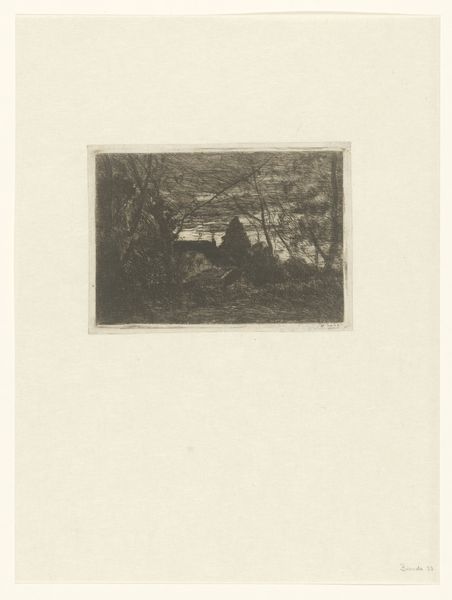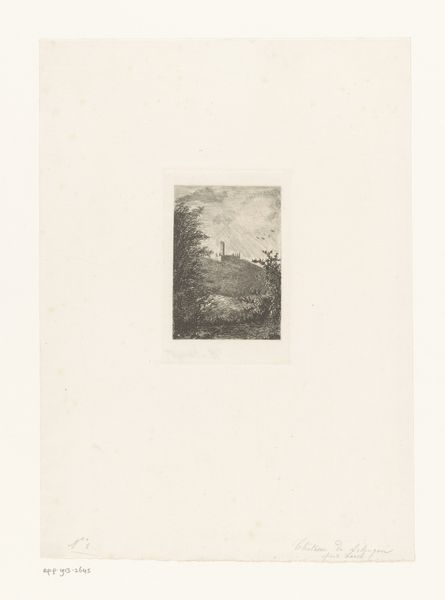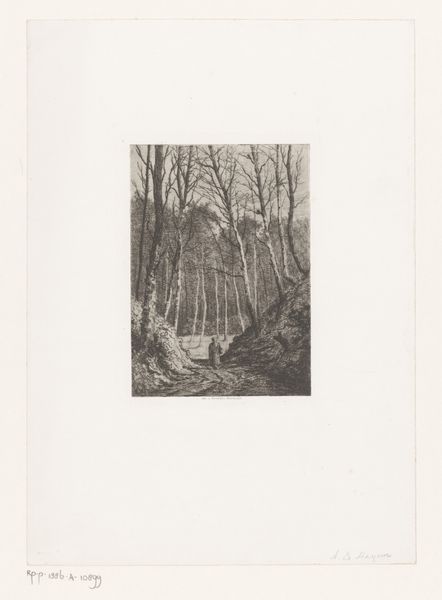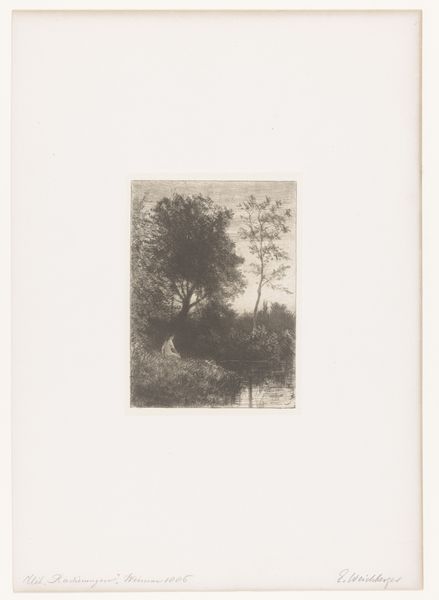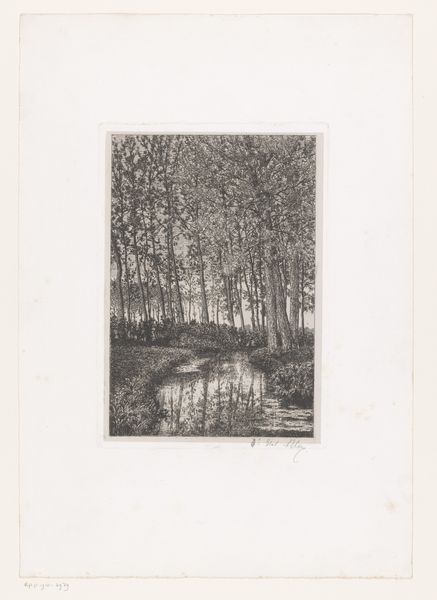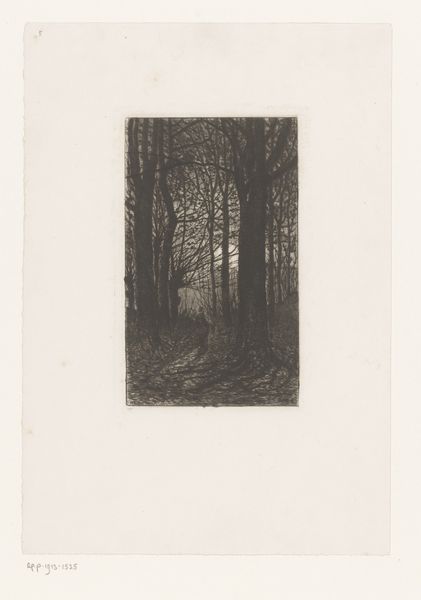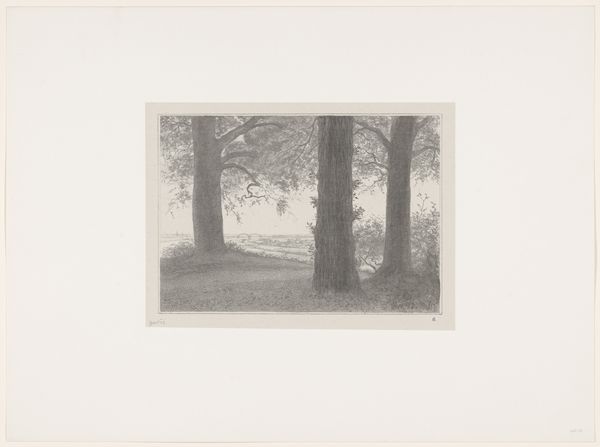
print, etching
#
lake
# print
#
etching
#
landscape
#
romanticism
#
realism
Dimensions: height 188 mm, width 113 mm
Copyright: Rijks Museum: Open Domain
Editor: This is "Landscape with Pontoon" by Charles-François Daubigny, an etching from 1850. I'm struck by how intimate it feels, even though it's a landscape. What social and historical contexts do you see at play within it? Curator: It’s tempting to see it simply as a serene scene, right? But let’s think about mid-19th century France. The rise of industrialization was impacting rural life and land use. Daubigny, working in a period of enormous social upheaval, seems to subtly address class and labor through this natural setting. Editor: How so? Curator: The pontoon, a simple structure, becomes a space of in-betweenness. Is it a site of work, of transport, or perhaps of leisure accessible to some? Where does it lead? This raises the questions of accessibility and who benefits from resources. Considering Daubigny's contemporaries like Millet who explicitly depicted peasant life, does Daubigny's seemingly apolitical landscape in fact have something to say about social relations and class divisions, maybe even ecological concerns of his time? Editor: That’s fascinating, I hadn’t considered those underlying power dynamics in what seemed like such a calm, pretty picture. Curator: Consider also Daubigny's influence on the Impressionists, a group whose explorations of light and color are often interpreted through a lens of bourgeois leisure. Yet, if we consider the shifts in land ownership and access happening at that time, how might that change how we interpret even their sun-drenched canvases? Editor: This etching offers such a focused, nuanced insight, a moment of quiet observation laden with complexity! Thanks. Curator: Indeed, it reveals how even seemingly straightforward landscapes can be deeply intertwined with historical, economic, and class-based considerations.
Comments
No comments
Be the first to comment and join the conversation on the ultimate creative platform.

